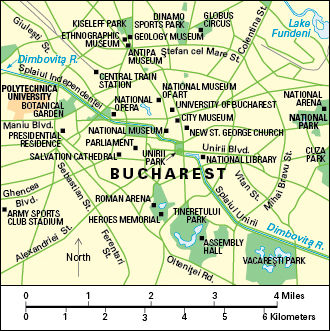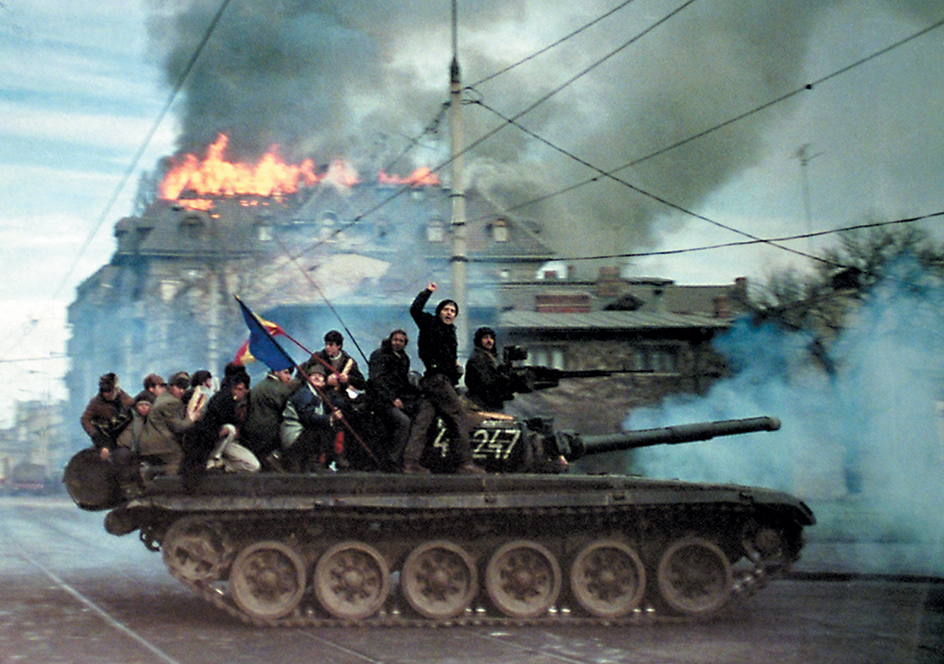Bucharest << BOO kuh `rehst` or `byoo` kuh REHST >> (pop. 1,716,961) is the capital and largest city of Romania. It is also the nation’s chief commercial and cultural center. Its name in Romanian is Bucuresti. The city lies in southeastern Romania, on both banks of the Dimbovita River.

In the 1800’s and early 1900’s, city planners patterned parts of Bucharest somewhat after the design of Paris. For example, Bucharest has many wide boulevards, as does the French capital. Central Bucharest includes many modern hotels, office buildings, and shops, as well as older buildings. The Palace of the Republic, built in 1937, houses the national art museum of Romania. Near the palace stands the Romanian Athenaeum, an attractive concert hall built in the late 1800’s. The massive and ornate Palace of Parliament, constructed during the 1980’s, is one of the largest buildings in the world.
Other cultural attractions in Bucharest include theaters and the Museum of the Village, which has an exhibition of Romanian peasant architecture. Bucharest University is near the center of the city. Bucharest has a number of mansions, some of which are hundreds of years old. The city also has many lakes, parks, and wooded areas.
Many people of Bucharest work in factories or have government jobs. Most of the factories are in the suburbs. The area’s chief products include chemicals, farm machinery, motor vehicles, and textiles.
According to legend, Bucharest was founded and named after a shepherd named Bucur, who tended his sheep on the site in the 1400’s. From the 1400’s to the 1800’s, Bucharest was ruled by the Ottoman Empire and then Russia. In 1861, Bucharest became the capital of Romania, which had been formed by the union of Moldavia and Walachia. An earthquake struck Bucharest in 1977, causing about 1,500 deaths and $1 billion in damage. The city was quickly rebuilt. During the 1980’s, however, Romanian dictator Nicolae Ceausescu destroyed many churches, houses, and historic buildings as part of a modernization plan. 
